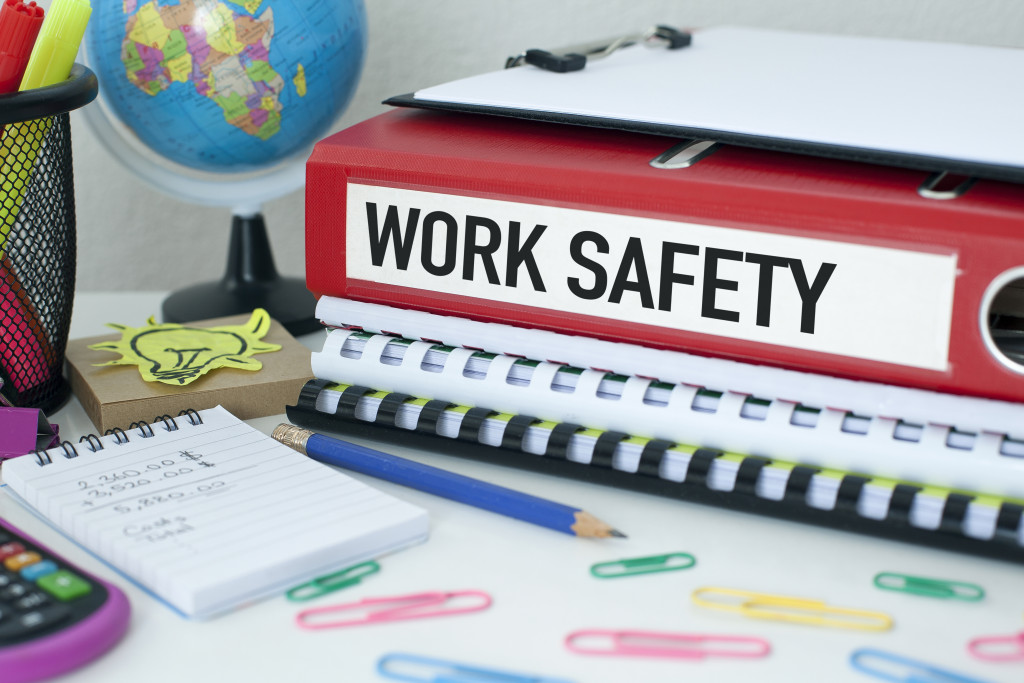The United States Department of Labor has guidelines for safety and health management in the workplace. Safety in the workplace remains a top concern for high-risk industries. In the Bureau of Labor Statistics data, the year 2019 saw a 2% rise in fatal incidence compared to the previous year. The Bureau recorded 5,333 deaths from work-related injuries in 2019.
The number one reported reason for the fatalities has to do with transportation accidents. This accounts for a total of 40 percent of the data. The second leading cause of workplace fatality is related to the handling of heavy machinery and equipment.
Is your small business required to comply with the OSHA?
If you have a small business, you might be thinking if all this data should concern you at all. The answer is, it depends. The Occupational Safety and Health Act (OSHA) provides guidelines for a safe workplace and covers most businesses. Under this law, there are set standards that aim to protect the well-being of employees in the workplace. However, there are low-risk industries not covered by the act.
In simple terms, if your small business has less than ten employees, you are exempt. If your business is on the list of industries that are considered low-risk, you are also exempted. Some industries in this list are appliance stores, personal care stores, gasoline stations, book stores, and flower shops. Book publishers, insurance carriers, and elementary and secondary schools are also exempted.
What do you need to do if you are exempted?
Technically, OSHA awards partial exemption to you if you meet the criteria. What does this partial exemption mean? This means that you are not required to submit and maintain certain OSHA documents. These documents are the OSHA Form 300, 300A, and 301 for work-related injuries and illnesses.
However, in case one of your ten employees suffers a work-related injury, you are still required to follow the rules under OSHA. So it is safe to say that the only exemption for small businesses is the keeping of records. If, despite falling under a low-risk industry and having fewer than ten employees, you are required by the U.S. Bureau of Labor Statistics requires you to keep illness records, then you have to let go of that partial exemption. Other than that, all measures and standards under the act apply to your workplace.

How do you comply with the OSHA as a small business?
1. Understand all regulations under OSHA
There is no better way to comply with the law than by learning its coverage and application. You can always consult with a lawyer, so they can explain to you adequately what the law requires you to do as a business owner. Simply visiting the OSHA website will give you a basic understanding of the act.
2. Evaluate the risks in your workplace
Knowing the ins and outs of your workplace will help you identify the risks that your workers are constantly exposed to. You can also reach out to the safety consultation program in your state to conduct a free evaluation of your work site. Asking people in the same industry is also an option. Once you identify the safety risks in your workplace, you can develop a safety program.
It would be best if you also asked your workers directly about their safety concerns. You evaluate the workplace for their safety and protection, so it’s essential to include them in the evaluation process.
3. Come up with a safety and health program
Health program
Health and safety are a top priority, even for small businesses. This is why many private medical businesses turn to these urgent care opportunities to expand their horizon. You can partner with them to meet the needs of your workplace for urgent care and other medical needs.
Under the Affordable Care Act, if you want to provide health and dental coverage for your employees, you can ask the Small Business Health Options Program for help. There are incentives for employers who help promote health in the workplace under the same act.
Safety manual
A safety manual includes instructions in case a safety violation occurs. This manual should be distributed to all the workers. Include emergency procedures in case of fire, natural disasters, and industry-specific accidents. To ensure that your safety manual is up to the industry standards, submit it to a safety professional for review.
Final Thoughts
On top of all these efforts, educating your workers will also help prevent workplace accidents. Ultimately, knowing the laws surrounding the nature of your business will help you avoid unexpected costs of ignorance.
